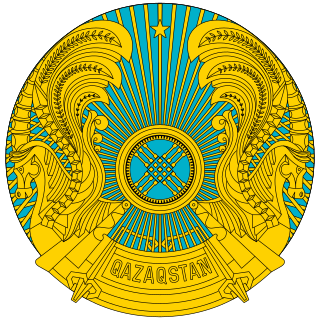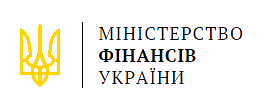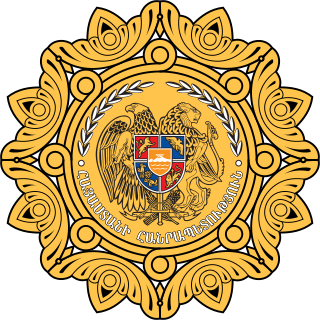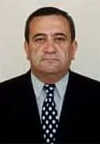Politics in Estonia takes place in a framework of a parliamentary representative democratic republic, whereby the Prime Minister of Estonia is the head of government, and of a multi-party system. Legislative power is vested in the Estonian parliament. Executive power is exercised by the government, which is led by the prime minister. The judiciary is independent of the executive and the legislature. Estonia is a member of United Nations, the European Union, and NATO.

The Government of the Republic of Armenia or the executive branch of the Armenian government is an executive council of government ministers in Armenia. It is one of the three main governmental branches of Armenia and is headed by the Prime Minister of Armenia.

The Control Yuan is the supervisory and auditory branch of the government of the Republic of China (Taiwan). Prior to constitutional reforms in the 1990s, the Control Yuan, along with National Assembly and the Legislative Yuan formed the national tricameral parliament. It functioned similarly to an upper house of a bicameral legislature, though it formed its own separate branch and was indirectly elected by provincial or municipal legislatures with 178 seats.

The Prime Minister of the Lao People's Democratic Republic, formerly the chairman of the Council of Government of the Lao People's Democratic Republic, is the head of government of Laos. The highest position in the government, they direct the country's executive branch. The prime minister is accountable to the president, the National Assembly and the country's only legal party: the Lao People's Revolutionary Party (LPRP). The current prime minister is Phankham Viphavanh, who was elected in 2021.

The National Assembly of the Socialist Republic of Vietnam is the national legislature of the Socialist Republic of Vietnam.

The Senate of Kazakhstan is the upper house of two chambers in Kazakhstan's legislature, known as the Parliament (Parlamenti). The Senate is composed of elected members: two from each region and two from three municipalities which are Almaty, Nur-Sultan, and Shymkent.

In Greece, the Hellenic Court of Audit is The Supreme Audit Institution of the Hellenic Republic, auditing the use of public funds in Greece according to the principles of legality, regularity and sound financial management. Synedrio is also the Supreme Financial Court, one of the three Supreme Courts of Justice, grounded on the Constitution, provides for its jurisdictional, advisory and auditing competences.

The Central Bank of Armenia is the central bank of Armenia with its headquarters in Yerevan. The CBA is an independent institution responsible for issuing all banknotes and coins in the country, overseeing and regulating the banking sector and keeping the government's currency reserves. The CBA is also the sole owner of the Armenian Mint.

The Government of Romania forms one half of the executive branch of the government of Romania. It is headed by the Prime Minister of Romania, and consists of the ministries, various subordinated institutions and agencies, and the 42 prefectures. The seat of the Romanian Government is at Victoria Palace in Bucharest.

The Court of Audit of the Republic of Slovenia is the highest body for supervising state accounts, the state budget and all public spending in Slovenia. The Constitution of Slovenia further provides that the Court of Audit is independent in the performance of its duties and bound by the Constitution and law. The Court of Audit Act also defines that the acts with which Court of Audit exercises its powers of audit cannot be challenged before the courts or other state bodies.

The Ministry of Finance of Ukraine is a central executive agency in Ukraine charged with developing and implementing national financial and budget policies, and with defining national policies in customs and taxation. The ministry is responsible for ensuring that the state has enough resources to perform its functions and that financial policies promote economic growth.

The Ministry of Hotels and Tourism is a ministry in the Burmese government responsible for the country's tourism sector.

Accounts Chamber of the Russian Federation is the parliamentary body of financial control in the Russian Federation.

The Constitutional Court of Armenia is the highest legal body for constitutional review in Armenia. It is responsible for supervising the constitutionality of laws and other legislative instruments. The law of constitutional court of Armenia is defined both in the Armenian constitution and in law.

The President of Armenia is the head of state and the guarantor of independence and territorial integrity of Armenia elected to a single seven-year term by the National Assembly of Armenia. Under Armenia's parliamentary system, the president is simply a figurehead and holds ceremonial duties, with most of the political power vested in the Parliament and prime minister.

The Central Electoral Commission of Armenia (CEC) organizes elections and referendums in Armenia. The Commission oversees and regulates the electoral process, counts and publicizes results, among other duties. Before the formation of the Republic of Armenia in 1991, the Central Electoral Committee activities were carried out in accordance with Soviet Armenian laws set by the Election of People's Deputies. Electoral reforms were adopted in August 2011 concerning the organizing and conducting of presidential and regional elections in Armenia, three levels of electoral committees were established.

Ashot Kolya Yesayan is an Armenian politician.

Raphael Andranik Bagoyan is an Armenian Politician.
The Chamber of Accounts of the Republic of Azerbaijan is a supreme audit institution, the highest financial control authority of the Republic of Azerbaijan.

The State Audit Service of Ukraine (SAS) is central executive authority, the activity of which is directed and coordinated by the Cabinet of Ministers of Ukraine through the Minister of Finance of Ukraine and which implements the state policy in the sphere of the public financial control.




















